|
35. Lycaena tityrus (Poda, 1761) / Sooty copper / Lycaenidae – Lycaeninae
NL: bruine vuurvlinder / D: Brauner Feuerfalter / F: cuivré fuligineux, l’argus myope
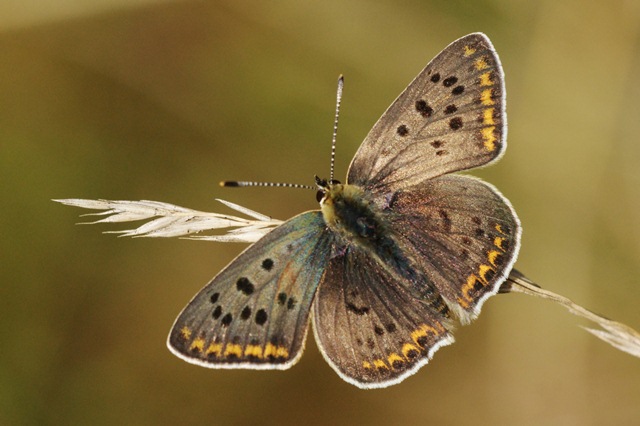 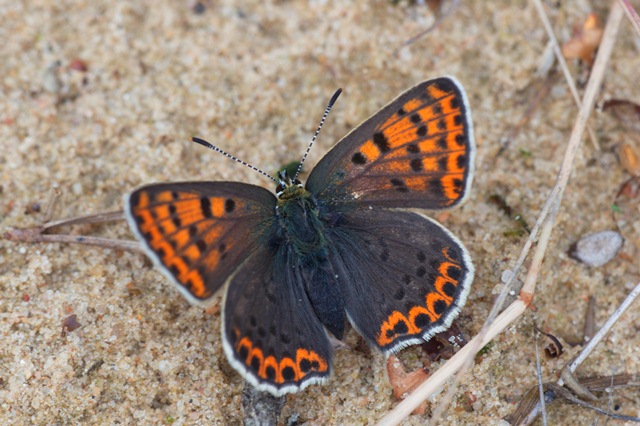 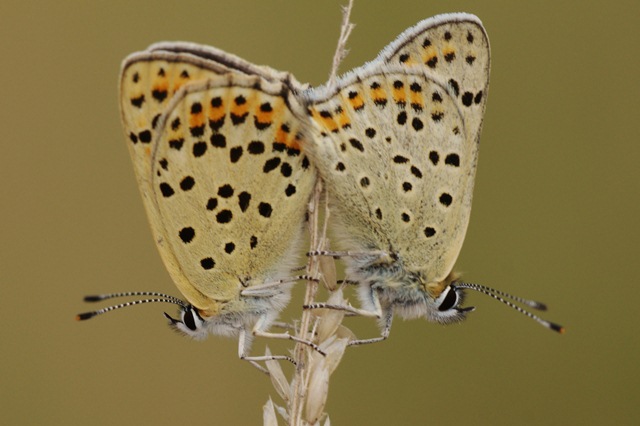
Photographs: Jeroen Voogd ©.
Small, wing length 14 (13-16) mm. In former days wide spread in the Benelux, nowadays restricted to heathlands in the Netherlands and some grassland on dry chalky and sandy soil in the south of Wallonia.
Butterfly is on the wing from mid-May until early-June and peaks end-May and from mid-July until mid-August and peaks early August. The species is known from sub-maritime and continental climates, amplitude 7 to 16. The required heat sum is 700°d and the tolerated 2000°d.The corresponding climate windows are 24 and 38 weeks.
From an ecological viewpoint Lycaena tityrus is similar to L. phlaeas; however, whereas the former has a more restricted distribution, the latter is very successful and occurs from Africa up to the Polar circle and is also a successful pioneer that can establish itself very quickly in new locations. The main difference is the synchronous life cycle of L. tityrus in contrast to one with risk spreading traits in L. phlaeas.
Ecological characteristics
Behaviour over time
Overwintering: small larva in third instar, sometimes fourth instar, hidden in litter layer.
Reproduction: oviposition starts after 4-6 days when the body contains about 80 eggs. Estimated potential production 1.9 times as much.
Larval feeding periods: in summer 23 (16-40) days, in autumn 36 (17-54) days and after hibernation in spring 25 (21-35) days in mid-April until end-May.
Generations: two, in warm summers up to three.
Spreading of risk: flexibility in diapause.
Life cycle: egg 6 (4-10) days; larva in summer 23 (16-40) days, in overwintering 36-45 weeks; pupa 13 (8-22) days.
Life span of adult: short, 2 weeks.
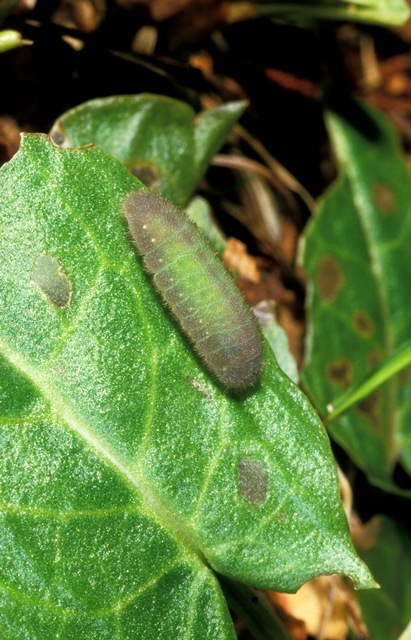 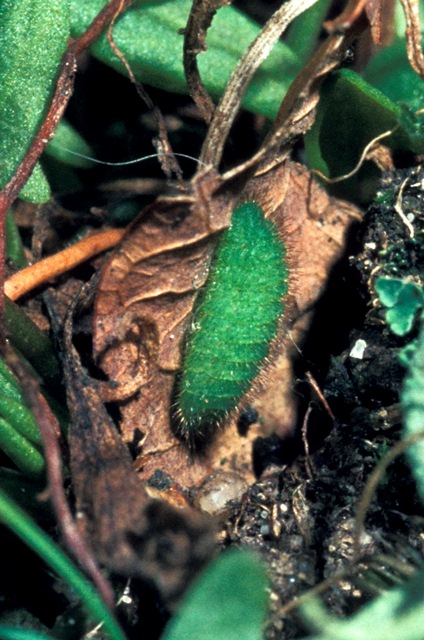
Photographs: Frits Bink ©.
Behaviour in space
From stay-at-home to migrant: males perch, females are more or less nomadic.
Finding a mate: male perches, females seduce males. Sometimes they congregate on a flowering bush, e.g. a bramble.
Orientation in the landscape: sites with short grass or heather with patches of bare and warm soil.
Oviposition: in a cluster of 2-6 eggs on the upper side of a mature leaf, preferably on small plants on bare soil.
Defence
Threats from other organisms: no defence, vulnerable to predators.
Myrmecophily: very weak, ants do not pay attention to the larvae but to the pupae, which can stridulate loudly and attract the attention of ants.
Threats from the environment: the species occurs often at very dry and warm places, indicating a tolerance of heat and drought.
Feeding habits
Adult: nectar of flowers in the herb layer.
Larva: feeds on the mature leaves, when very small it makes ‘windows’ on the underside.
Larval foodplants
Plant species: Polygonaceae, Rumex acetosa, R. acetosella, R. thersiflorus.
Journal
Rearing experiments:
1. Based on specimen from national park Hoge Veluwe, Netherlands:
28 July 1982: female captured, produced eggs on 30 and 31 July.
9 August: larvae in L2.
21 August: larvae 6 mm in length, some of them had changed colour and become reddish.
19 September: host plant had not been watered and was completely dried out; nevertheless some larvae appeared as soon it was watered. The larvae had sheltered under the wilted leaves in small groups. They were still 6 mm in length.
Overwintered outdoors.
2 March 1983: taken indoors.
18 April: one larvae active.
Experiment ended.
2. Based on specimen from national park Hoge Veluwe, Netherlands:
27 August 1985: received 13 eggs near to hatching.
1 September: all eggs hatched.
11 September: larvae in L2.
20 September: all larvae had entered diapause, 10 larvae in L3, additional light provided but larvae remained in diapause.
Overwintered outdoors
9 march 1986: taken indoors.
11 March: first larva started feeding.
28 March: 3 L3, 1 L4 and 2 fully grown larvae, one purple coloured, the other green.
5 April: the fourth instar overwintered larva pupated.
17 April: other larvae about fully grown.
24 April: one larva of the third instar overwintering prepared for pupation.
25 April: two pupae found.
29 April: first adult appeared, male.
4 May: second adult, male.
6 May: third adult, female.
Table 35-1. Results of dissections

Table 35-2. Collection and observation localities
D, Kaub 50° 05’ 36”N – 7° 45’ 43”E; 26 May 1986.
D, Lorch 300m, 50° 02’ 05”N – 7° 47’ 56”E; 26 May 1986.
D, Meetschow 53° 02’ 32”N – 11° 23’ 32”E; 22 June 1984.
D, Staffelstein 50° 05’ 32”N – 11° 01’ 25”E; 16 June 1985.
F, Aurel, 400 m, 44° 43’N – 5° 16’E; 29 August 1984, 2 September 1984.
F, la Bruyère 45° 39’ 01”N – 5° 38’ 09”E; 25 August 1984.
F, Lorraine, Damvillier 49° 21’ 27”N – 5° 24’ 21”E; 12 June 1984.
F, Maison-du-Bois 46° 57’ 57”N – 6° 25’ 17”E; 24 August 1984.
F, Montmédy 217 m, 49° 31’ 07”N – 5° 21’ 33” E; 18 August 1984
F, Vosges, Katzenkoepfle, 565m, 48° 01’ 54”N – 7° 06’ 04”E; 11 June 1984, 21 August 1984.
F, Vosges, Wasserbourg, 500 m, 48° 00’ 13”N – 7° 09’ 46”E; 21 August 1984
NL, Hoge Veluwe 52° 05’N – 5° 51’E; 11-7-1983; 30 July 1984, 22 August 1984.
NL, Hoge Veluwe 52° 04’ 47”N – 5° 49’ 47”E; 27 July 2000, 31 August 2000.
NL, Hoge Veluwe 52° 03’ 41”N – 5° 50’ 46”E; 31 May 2002.
NL, Planken Wambuis 38 m, 52° 02’ 53”N – 5° 46’ 24”E; 15 June 2011.
Fig. 35-1. Lycaena tityrus, phenogram adapted from Bos et al. 2006: 145.
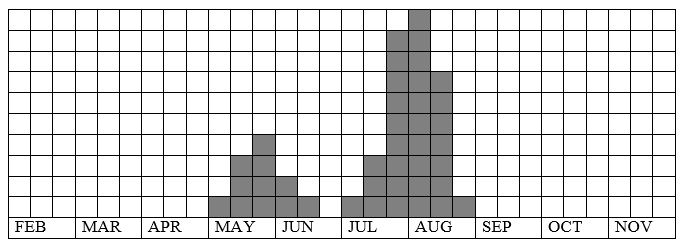
Fig. 35-2. Lycaena tityrus, habitat characteristics.
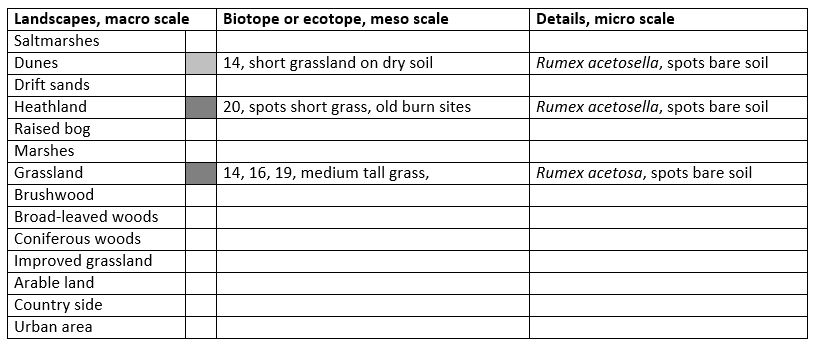
Fig. 35-3. Lycaena tityrus, climate matrix, heat-sums 700 - 2000°d.
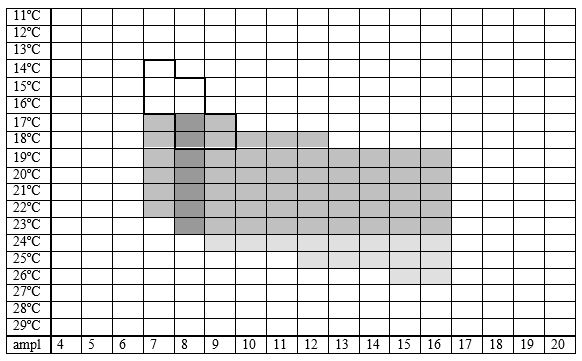
|










